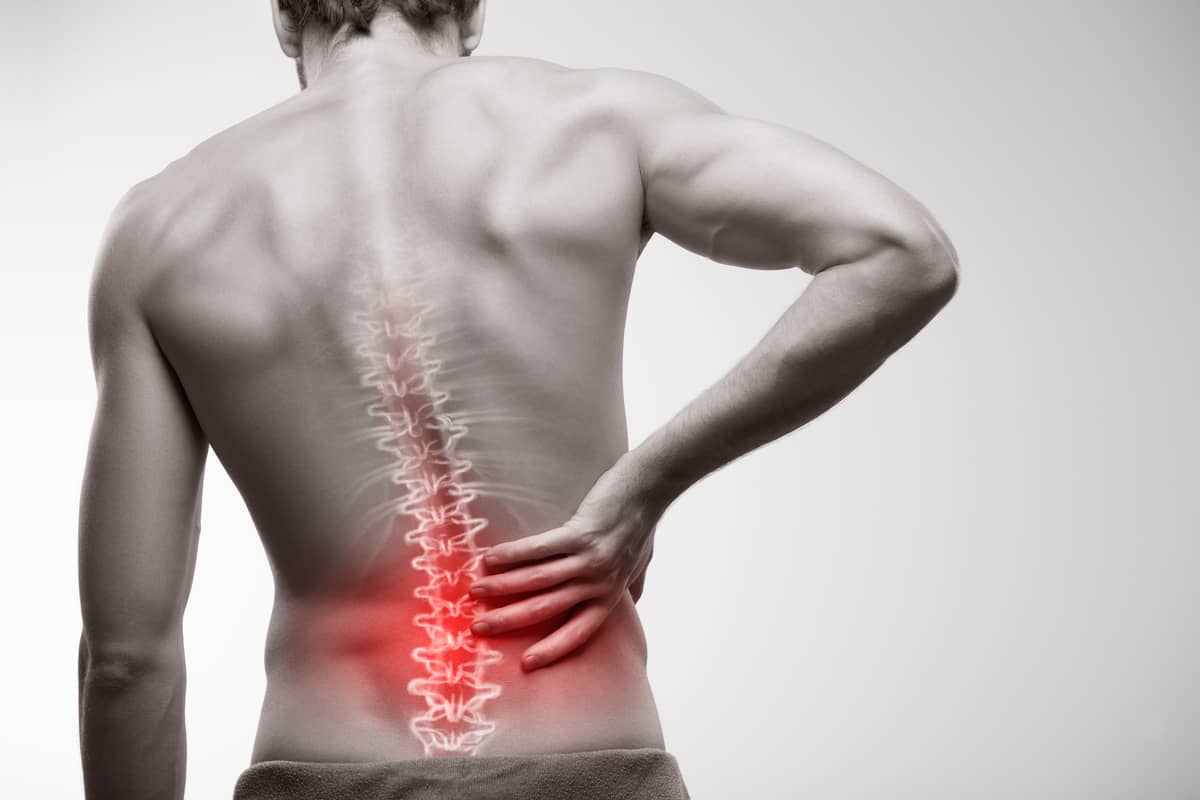Don’t Take Back Pain Lying Down
It happens to all of us. A twist or a turn, followed by sudden back pain. The types and causes vary, but the fear is always the same: How long will it last? Is it permanent? Can I get relief? Here are some updates.

Back pain has a special connection to the mind. The fear it induces can be crippling. The pain itself, whether from a simple muscle strain or a ruptured disc, marks the start of a cycle. It begins at the place where tissue is torn or compressed: A signal is sent to the brain, indicating that something is wrong. The brain then responds with signals of its own, telling the muscles to tighten up (and sometimes spasm) in order to protect the injured area.
At the same time, the tissue damage releases enzymes and cytokines that signal the vascular system to send stem-cell-derived, self-repair cells to the site of injury. Sometimes, this initial response solves the problem. Other times, the injury causes more inflammation, more swelling, and more tissue degeneration. It can then become a chronic problem.
The most common of these back injuries is to an intervertebral disc. These thick, fibrous rings (annulus), surrounding a gelatinous center, separate the spinal vertebrae. Small tears of the annulus lead to exquisite pain, but can often heal. Larger tears can cause extrusion of the disc into the spinal canal, pushing on the nerve roots. That pressure, when it occurs in the lower back, leads to classic sciatica: pain and numbness shooting down the back of the leg.
There are many other variations of back pain, ranging from simple muscle strains to arthritis of the spine (which can narrow the outlets where the nerves course or limit the motion of spinal segments). Whether sudden or chronic, all of these causes initiate a pain cycle.
The classic treatment for back pain was bed rest. But this led to muscle weakness, depression, and susceptibility to further injury. The next wave was physical therapy, chiropractic manipulation, and stretching exercises. These interventions often worked—especially when they included hands-on mobilization of the muscles and a focus on stretching and strengthening. As most chronic back pain patients have weak core muscles, strengthening the core protects the back while the injured areas heal.
Strategies that didn’t work included various laser therapies, ultrasound, magnetic therapy, narcotics, muscle relaxants, and braces. The narcotics, muscle relaxants, and braces were the worst offenders—they prolonged the muscle weakening and the pain cycle even if they provided some temporary relief.
When the disc was the cause of the pain—a finding usually documented by a careful physical exam and MRI—cortisone injections were deployed to stop the source of the inflammation. Although there were many success stories, cortisone is destructive to the soft tissues, as it shuts down protein metabolism and weakens muscles and tendons.
Today we have entered the anabolic era of sports medicine. We inject growth factors and lubricants designed to reduce inflammation and recruit the body’s own stem-cell-derived self-repair cells to stimulate a healing response. The success of these therapies in joints and tendons has been extremely gratifying—and early studies show that these therapies may be applicable in a variety of spinal injuries as well.
To define which injections will be most effective for which tissues, our team is launching a research and therapy program in this space. We believe that, when combined with a personalized fitness program, back pain can be turned into an opportunity for the patient to become fitter, faster, and stronger—and a lifelong athlete.
